Suppliers Scramble to Furnish Sophisticated Interiors (and Predict the Future)

You might not have noticed, but car interiors are growing increasingly more complex — not just in how they incorporate technology but also in the materials used. While the 1990s were awash in gray or beige plastics and upholstery, today’s vehicles source furnishings from a vastly broader palate.
Hyundai’s Ioniq is a prime example. In addition to using recycled plastics, it also uses bio-fabrics for the headliner and carpeting. Hyundai has also touted the use of sugarcane as a component for the interior’s soft-touch materials, while powdered wood and volcanic ash hides in harder surfaces.
OEMs are always trying to provide customers with something they can’t get elsewhere. More colors, different trim pieces, eco-friendly materials, and little embellishments that could be the deciding factor. Higher-trimmed vehicles from 2o years ago were primarily set apart by their upgraded mechanical components, adjustable seats, and superior electronics. With today’s vehicles already so well appointed, manufacturers are implementing custom stitching, chrome accents, and decorative lighting on a mass scale to inform occupants, “This is not a base model!”
It’s great news for consumers, but suppliers are scrambling to predict what automakers and their buyers will want next.
Rose Ann Ryntz, vice president of advanced development and materials engineering at International Automotive Components Group, told Automotive News that it’s literally a guessing game.
“We just don’t deal with aluminum or steel. We deal with myriad of magnesium, different type of plastics and different fillers,” she said. “I would say it may be more complex when you look at the growth of crafted interiors and how we get there.”
Ryntz said that while suppliers design parts for several manufacturers, they must also leave room to ensure OEMs can provide something unique to their vehicles. “If a designer asks for a typical type of decoration, we need to understand what happens behind the scenes, underneath what I would consider the ‘A-surface’ to make a quality part,” she said.
Likewise, the expectation of what a vehicle should be has changed dramatically. Understandably, people who spend hours commuting every day want an interior far plusher and safer than the glorified hospital gurneys of yesteryear.
“The interior of an automobile used to be nothing more than a soft bench seat and a roof to keep occupants comfortable and out of the elements,” Michael Harley, executive analyst for industry research firm Kelley Blue Book, said in an interview with Wired earlier this year. “Today, it’s a safety cage, a music amphitheater, a telephone conference room, a place to eat meals, and more. Vehicles are no longer machines that simply move people between two points, and shoppers demand much more from the interior than they did even a decade ago.”
Another sea change seems likely as autonomous vehicles eventually enter into the fray. In-car technology has already gotten to a point where buttons and knobs are no longer a necessity — though they’re very much appreciated. Combine that with automakers perpetually requesting components not add a bunch of heft without sacrificing quality and suppliers have their hands full for the foreseeable future.
“If you look at overall mobility expectations, they’ve pretty much not been defined,” Ryntz said. “I would tell you that the interior of a cabin of a car is not defined, either.”
“We’re designing for everyone,” she continued. “We don’t have electric powertrains versus a combustion engine. We have a myriad of materials, a myriad of deployment characteristics, and I would say in all of it, lightweight is certainly already there but we’re trying to continue to improve it.”

A staunch consumer advocate tracking industry trends and regulation. Before joining TTAC, Matt spent a decade working for marketing and research firms based in NYC. Clients included several of the world’s largest automakers, global tire brands, and aftermarket part suppliers. Dissatisfied with the corporate world and resentful of having to wear suits everyday, he pivoted to writing about cars. Since then, that man has become an ardent supporter of the right-to-repair movement, been interviewed on the auto industry by national radio broadcasts, driven more rental cars than anyone ever should, participated in amateur rallying events, and received the requisite minimum training as sanctioned by the SCCA. Handy with a wrench, Matt grew up surrounded by Detroit auto workers and managed to get a pizza delivery job before he was legally eligible. He later found himself driving box trucks through Manhattan, guaranteeing future sympathy for actual truckers. He continues to conduct research pertaining to the automotive sector as an independent contractor and has since moved back to his native Michigan, closer to where the cars are born. A contrarian, Matt claims to prefer understeer — stating that front and all-wheel drive vehicles cater best to his driving style.
More by Matt Posky
Latest Car Reviews
Read moreLatest Product Reviews
Read moreRecent Comments
- The Oracle Geesh, Stellantis can’t even perform the upkeep on that relic of a plant. Sad.
- The Oracle I see Tesla introducing disruptive charging technology within 3 years.
- The Oracle I can see into the future and I see fisticuffs and profanity-laced tirades coming to charging locations near ya’ll.
- El scotto Will ascots be discussed at the HOA meetings? Or Purdey shotguns?
- El scotto Wait, wait will they rename the street it fronts Jermyn or New Bond Street?




















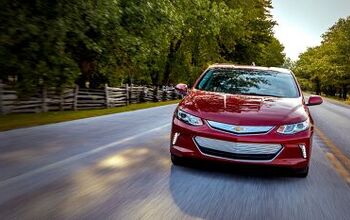
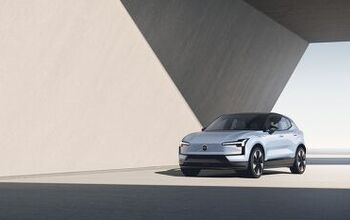


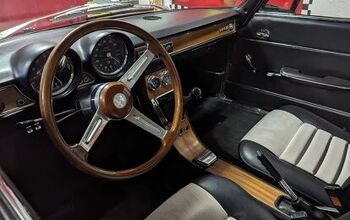

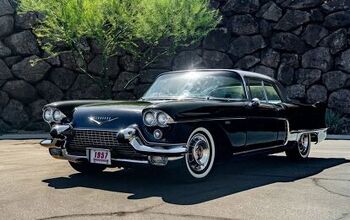




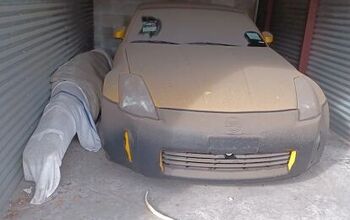
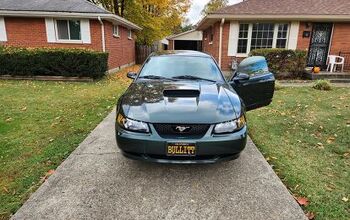

Comments
Join the conversation
"While the 1990s were awash in gray or beige plastics and upholstery, today’s vehicles source furnishings from a vastly broader palate." Huh? Today's color choices are SO MANY. Black. Grey. Beige/tan. That's it. Oh, and by the way, "palate" is the thing in the roof of your mouth. "Palette" is the word you want. I think soft touch plastics are an abomination. In a few years they invariably turn to goo. I hate having to wash that stuff off my hands all the time. “I would tell you that the interior of a cabin of a car is not defined, either.” If not, then why are they all identical? Giant unnecessary center console - check. Touchscreen in the middle of the dash - check. Lots of inaccessible spaces along the seats for stuff to drop into - check. Perpetual haze on the inside of the windshield due to outgassing of interior plastics - check. Carpet specially configured for maximum accumulation of dirt, dust, mud, etc - check - especially in the light colors, so it can look filthy as soon as possible. Plastic molded dashboard specified for earliest sun-caused cracking - check. Instrument panel components that require a midget contortionist to completely disassemble the dashboard, interior, and half the AC system to replace one burned-out bulb - check. Stereo of weird non standard size and shape so it can't be replaced by an aftermarket one - check. Excessive attention applied to "infotainment" and no attention applied to ergonomics, usability, or safety in operation - check. So where are all these "myriad" variations?
Oh, one last thing, we've had bucket seats and center consoles for over 50 years now, and still no one has figured out what women are supposed to do with their purses when they're driving and there's a person in the front passenger seat. With a bench seat, you just put your purse on the seat next to you. With a center console, you have to either put it down by your passenger's feet, or precariously perch it on the console where it'll fall off at the most inopportune moment, or put it in the back seat where you can't get at it. All these brilliant marketeers and designers and no one can figure out an issue that affects more than half the people who drive cars. Maybe...we could offer an extra cost option with a bench seat and a column shifter? NAAAHHHH.